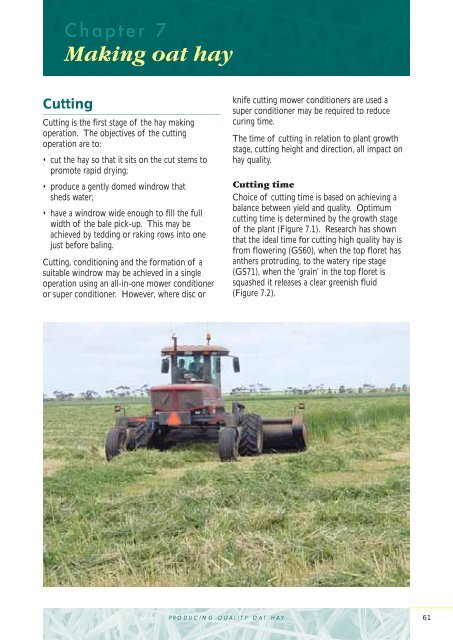Create successful ePaper yourself
Turn your PDF publications into a flip-book with our unique Google optimized e-Paper software.
Chapter 7<br />
Making oat hay<br />
Cutting<br />
Cutting is the first stage of the hay making<br />
operation. The objectives of the cutting<br />
operation are to:<br />
• cut the hay so that it sits on the cut stems to<br />
promote rapid drying;<br />
• produce a gently domed windrow that<br />
sheds water;<br />
• have a windrow wide enough to fill the full<br />
width of the bale pick-up. This may be<br />
achieved by tedding or raking rows into one<br />
just before baling.<br />
Cutting, conditioning and the formation of a<br />
suitable windrow may be achieved in a single<br />
operation using an all-in-one mower conditioner<br />
or super conditioner. However, where disc or<br />
PRODUCING QUALITY OAT HAY<br />
knife cutting mower conditioners are used a<br />
super conditioner may be required to reduce<br />
curing time.<br />
The time of cutting in relation to plant growth<br />
stage, cutting height and direction, all impact on<br />
hay quality.<br />
Cutting time<br />
Choice of cutting time is based on achieving a<br />
balance between yield and quality. Optimum<br />
cutting time is determined by the growth stage<br />
of the plant (Figure 7.1). Research has shown<br />
that the ideal time for cutting high quality hay is<br />
from flowering (GS60), when the top floret has<br />
anthers protruding, to the watery ripe stage<br />
(GS71), when the ‘grain’ in the top floret is<br />
squashed it releases a clear greenish fluid<br />
(Figure 7.2).<br />
61

















